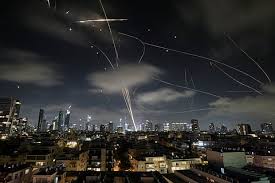Tracking Israel-Iran conflict as tensions escalate: Here’s how the attacks unfolded

Tensions between Israel and Iran have escalated dramatically in recent weeks. A series of attacks, counterstrikes, and cyber operations have pushed the region closer to a dangerous confrontation. This timeline breaks down how the conflict has intensified and what it means for the Middle East.
What Triggered the Escalation?
The conflict surged after an Israeli airstrike reportedly killed senior Iranian military figures in Damascus. The strike targeted a building near Iran’s embassy compound in Syria. Tehran responded with a stern warning, promising revenge for what it called a deliberate attack on its officials.
Iran’s Direct Strike on Israel
On April 13, 2024, Iran launched over 300 drones and missiles toward Israel. It was the first time Iran had attacked Israeli territory directly from its soil. Israeli defense systems, including the Iron Dome, intercepted most of the projectiles. The United States and other allies supported Israel during the assault.
Despite minimal damage, the attack marked a turning point. It demonstrated Iran’s readiness to act without using proxies like Hezbollah or Houthi rebels.
Israel’s Counterattack
Israel struck back a few days later. Its air force hit military targets near the Iranian city of Isfahan. These sites were believed to hold nuclear research and drone development facilities. Iran confirmed the explosions but claimed the damage was limited.
The counterattack sent a clear message: Israel would respond to aggression with precision and force.
Cyber War and Intelligence Tactics
Both countries have stepped up cyber operations. Iran’s government websites and critical infrastructure faced disruptions. Many experts believe Israeli intelligence played a role. In return, Iran likely targeted Israeli banks and government portals in a wave of cyberattacks.
This digital warfare runs parallel to the physical conflict, showing how both sides fight on multiple fronts.
Proxy Battles Across the Region
Proxy groups have become more active. Hezbollah launched rockets into northern Israel, prompting a swift Israeli response. In Syria and Iraq, Iran-backed militias attacked U.S. military bases. The U.S. replied with targeted airstrikes to protect its personnel.
Houthi rebels in Yemen also issued threats and increased attacks on Red Sea shipping routes. Their goal: to pressure Israel and disrupt global trade.
Global Reactions and Diplomatic Pressure
World leaders urged both sides to step back. The United Nations called for de-escalation. The U.S. reaffirmed its support for Israel but also encouraged diplomacy. Arab nations, including Saudi Arabia and the UAE, voiced concern over the rising threat of regional war.
China and Russia urged restraint as well. However, they criticized Western nations for what they saw as biased support for Israel.
Looking Ahead: A Risky Road
The Israel-Iran conflict has reached a critical stage. Both sides are on high alert. Military units remain on standby, and allies continue to issue warnings. The risk of a full-scale war has never felt closer.
While backchannel talks are ongoing, no breakthrough has emerged. For now, the region holds its breath as tensions continue to mount.






